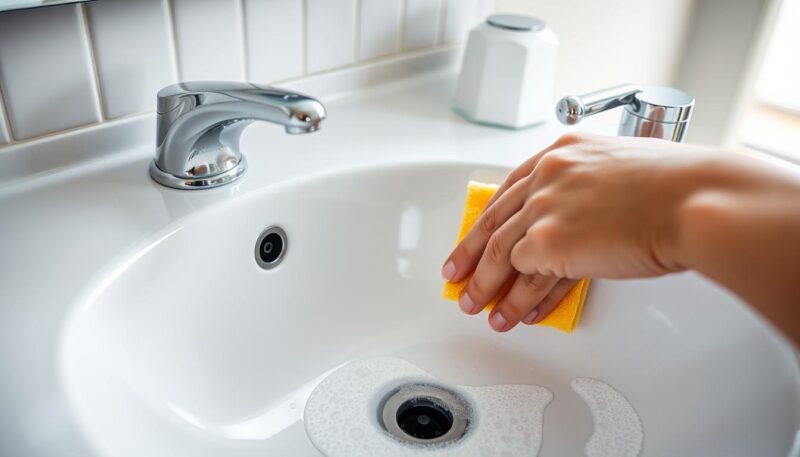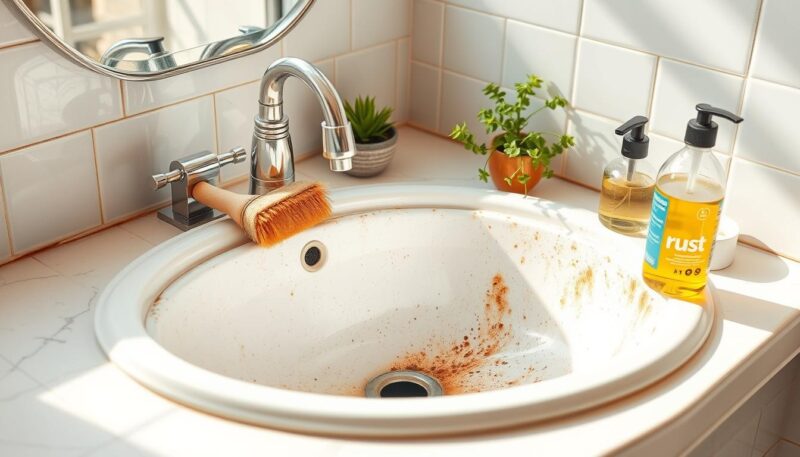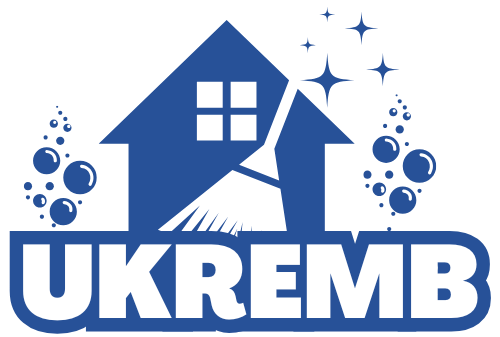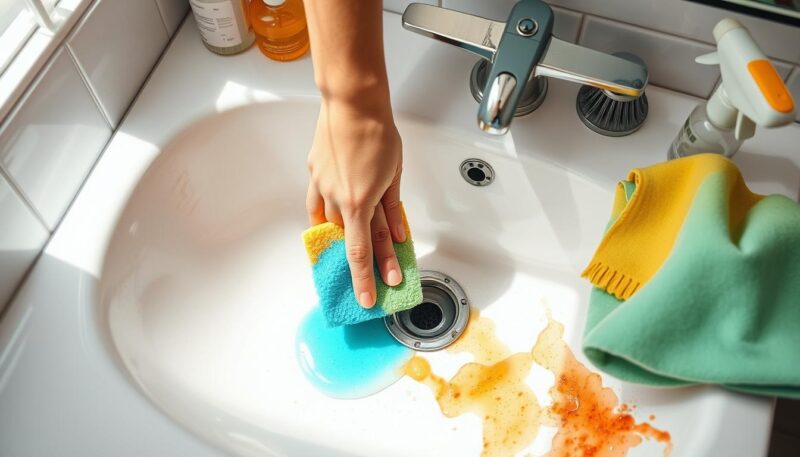Cleaning your bathroom sink is more than just a chore; it’s a crucial step in maintaining both hygiene and the overall aesthetics of your space. The bathroom sink, a common hotspot for bacteria like Streptococcus, Campylobacter, and E. coli due to stagnant water, requires diligent attention. With various materials like ceramic, stainless steel, and natural stone, understanding the right approach is essential for effective cleaning.
This guide will share essential sink maintenance tips and bathroom sink cleaning hacks that will help you tackle clean bathroom sink stains and keep your sink looking brand new. Armed with the right knowledge and supplies, you can create a cleaner, healthier environment for you and your family, making your bathroom shine with pride. Let’s get started on the journey to a spotless sink!
Understanding Your Bathroom Sink: Materials Matter
Choosing the right cleaning methods for your bathroom sink is crucial. Different bathroom sink materials demand distinct care techniques to avoid damage while ensuring they remain beautiful. By understanding each type, you can implement effective sink maintenance tips that help you maintain a clean bathroom sink devoid of stains, rust, and soap scum.
Ceramic and Porcelain Sinks
Ceramic and porcelain sinks are popular for their durability and classic look, often recommended for bathrooms. These surfaces require gentle cleaning methods to avoid scratches. A mixture of warm water and dish soap works well for regular maintenance. For stubborn clean bathroom sink stains, baking soda paste can be effective. Harsh chemicals could damage these materials, so it’s wise to proceed with caution.
Stainless Steel Sinks
Stainless steel sinks bring a sleek, modern appearance to any bathroom and can withstand more vigorous cleaning than other materials. To maintain their shine, you should use mild dish soap and water for daily cleaning. For tougher stains, a paste made from baking soda is typically effective. Avoid bleach-based cleaners, as these can alter the finish and affect the overall look of your sink.
Natural Stone Sinks
Natural stone sinks like granite, marble, or soapstone offer luxurious appeal and demand specialized care. These porous materials can be damaged by acidic substances such as vinegar, which can etch and dull the surface. Instead, opt for specialized stone cleaners for regular maintenance. Ensure you dry the sink after each use to prevent unwanted stains caused by water marks.
How to Clean Bathroom Sink: Step-by-Step Guide
Cleaning your bathroom sink may seem daunting, but breaking it down into simple steps can make it manageable. Following these effective methods will not only keep your sink looking pristine but will also enhance your sink maintenance routine.
Step 1: Clear the Decks
Begin by removing all personal items and accessories from around the sink. This step creates a decluttered workspace that allows you to spot hidden grime easily. Taking a moment to organize helps streamline the cleaning process and can reveal areas needing attention.
Step 2: Pre-Treat Tough Spots
Focus on those persistent problem areas such as soap scum or dried toothpaste. Apply a bit of baking soda to these locations and let it sit for approximately ten minutes. This natural remedy absorbs grime and loosens dirt, simplifying the scrubbing phase. Cleaning soap scum can be effortless when given this pre-treatment attention.
Step 3: The Gentle Scrub
Fill the sink with warm, soapy water using a mild dish detergent, and scrub all surfaces gently with a soft cloth or sponge. For crevices, an old toothbrush works wonders. Avoid abrasive pads, especially on ceramic or porcelain surfaces, to prevent scratches. Rinse thoroughly with clean water afterward to eliminate any soap residue.

To keep your sink looking its best, consider implementing the following bathroom sink cleaning hacks into your routine:
| Task | Frequency | Notes |
|---|---|---|
| Deep clean sink | Weekly | Removes stubborn grime buildup. |
| Rinse and wipe | Daily | Prevents dirt accumulation and keeps surfaces fresh. |
| Faucet cleaning | Weekly | Use vinegar and water with a soft toothbrush for buildup. |
| Drain cleaning | Weekly | Avoid clogs and odors by maintaining cleanliness. |
With these practices, consistently keeping your sink clean becomes simpler and more effective. Adopting a scheduled approach not only simplifies maintenance but also elevates the overall appearance of your bathroom. Embrace these techniques to enhance your space today!
Tackling Tough Issues: Removing Stains, Rust, and Soap Scum
Stubborn stains, rust, and soap scum can make your bathroom sink look unappealing. Thankfully, with the right methods, you can effectively restore its shine.
Dealing with Soap Scum
Soap scum develops quickly, often within a week of regular use, and is a combination of dirt, body oils, and minerals from hard water. To address this issue, consider the following steps:
- Spray vinegar on the affected surfaces and allow it to sit for a few minutes.
- Scrub gently with a sponge to break down the soap scum.
- If the soap scum persists, use a commercial cleaner specifically designed for cleaning soap scum.
Removing Hard Water Stains
Hard water stains create a chalky buildup that can detract from the beauty of your sink. A paste of baking soda and vinegar serves as an effective remedy:
- Mix equal parts of baking soda and vinegar to create a thick paste.
- Apply the paste directly to stained areas.
- Let it sit for a few minutes before scrubbing gently with a soft cloth or sponge.
Addressing Rust Stains
Rust stains can bond stubbornly to surfaces. To remove rust from sinks, consider these techniques:
- Apply lemon juice directly to the rust stain and let it sit for at least 10 minutes.
- For persistent rust, use a rust-stain remover and follow the manufacturer’s instructions.
- Avoid bleach, as it can worsen the rust problem and lead to further staining.

By utilizing these tips, you can maintain a clean and polished bathroom sink, free from soap scum, hard water stains, and rust. Regular upkeep will not only enhance the appearance of your sink but also prolong its lifespan.
Conclusion
Maintaining your bathroom sink is crucial for both aesthetics and hygiene. By learning how to clean your bathroom sink effectively, you can ensure that it remains a sparkling focal point in your home. Understanding the various materials your sink is made from, such as ceramic, porcelain, stainless steel, or natural stone, helps you choose the right cleaning methods and products for optimal results. Consistent care not only enhances the visual appeal but also mitigates the growth of bacteria and odors, making your bathroom a more inviting space.
Implementing essential sink maintenance tips, like using a drain strainer and avoiding the disposal of greasy substances, will go a long way in preventing common issues, such as clogs caused by hair and debris. Utilizing effective tools—like drain snakes, plungers, and even natural solutions like baking soda and vinegar—can significantly ease the burden of dealing with persistent clogs. Incorporating a monthly maintenance routine will help keep your drain clear, minimizing the chances of troublesome blockages.
Overall, investing time in your sink care ensures that it remains vibrant and functional for years to come. With these practical strategies and cleaning techniques in your toolkit, you can confidently tackle any challenges that may arise. So, embrace these practices and enjoy a clean, fresh, and inviting bathroom sink at all times!

